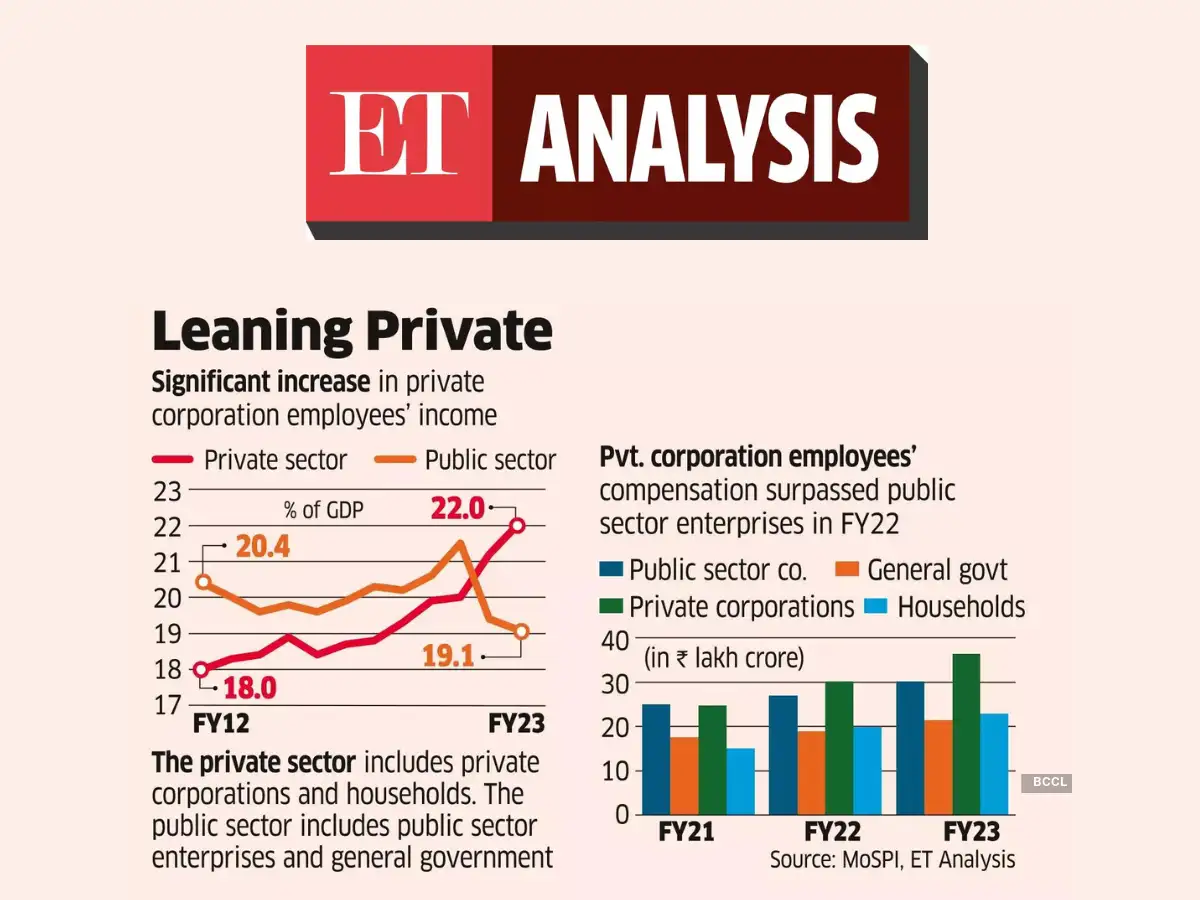Total compensation of employees working with private corporations increased to 13.5% of the GDP in FY23 from 12.8% in the previous year while households, which largely represent the informal sector, saw their wages rise to the highest level in nine years to 8.5% of the GDP in FY23 from 8.4% in FY22.
Experts noted that a rise in services could be a key factor for rising compensation in the private sector. “The higher compensation ratio can be attributed to the fact that the scope of services in GDP has risen while industry is down,” said Madan Sabnavis, chief economist at Bank of Baroda. “Typically, services have a higher component of labour, which increases share.”

Meanwhile, compensation of employees of public sector enterprises declined to its lowest level of 11.2% of the nominal GDP in twelve years in FY23 compared to 12.4% in FY12. Incomes of state, central and local government employees as a share of total economic output also declined to its lowest level in six years to 7.9% in FY23. It had hit a peak of 8.8% in FY21.
Overall public sector compensation, including both PSUs and government employees, as a share of GDP fell to 19.1% in FY23 from 19.4% in FY22. “It is a case of retired staff not being replaced,” Sabnavis said. “Hence, employment levels are coming down. Functions are also outsourced, like security and housekeeping, which go as admin expenses,” he added. Private sector compensation surpassed that of the public sector in FY22. In FY12, the share of public sector compensation in GDP was 2.4 percentage points higher than that of private sector, but in FY23, the share of the private sector was 2.8 percentage points more than that public sector.
According to experts, higher inflation may have helped growth in nominal compensation in the private sector in FY23 when the average consumer inflation was 6.7%. “Higher inflation amidst modest demand for unincorporated enterprises would have resulted in lower salary outgo,” said Paras Jasrai, senior analyst at India Ratings.
The rise in compensation is accompanied by a higher contribution by industry to total value added, as the value-added contribution went up to 35.2% of GDP from 34.6% of the GDP in FY22.
The contribution of the public sector enterprises in value-added as a share of GDP has declined to 15.9% in FY23 from 16.2% in FY22.










